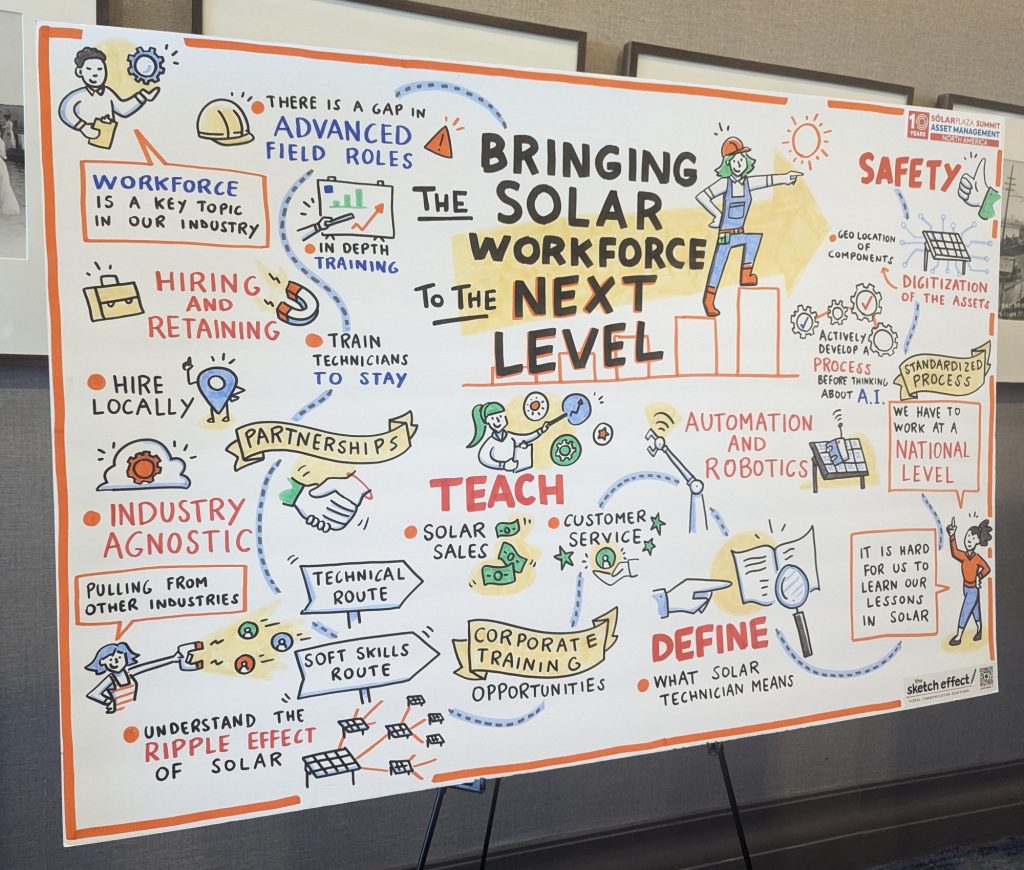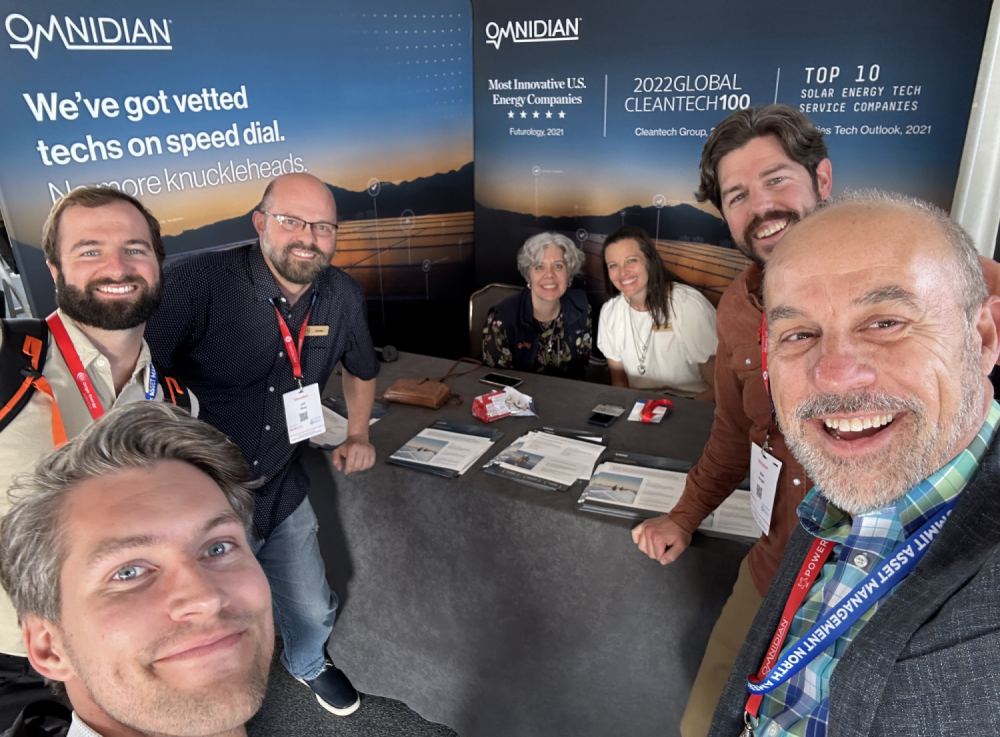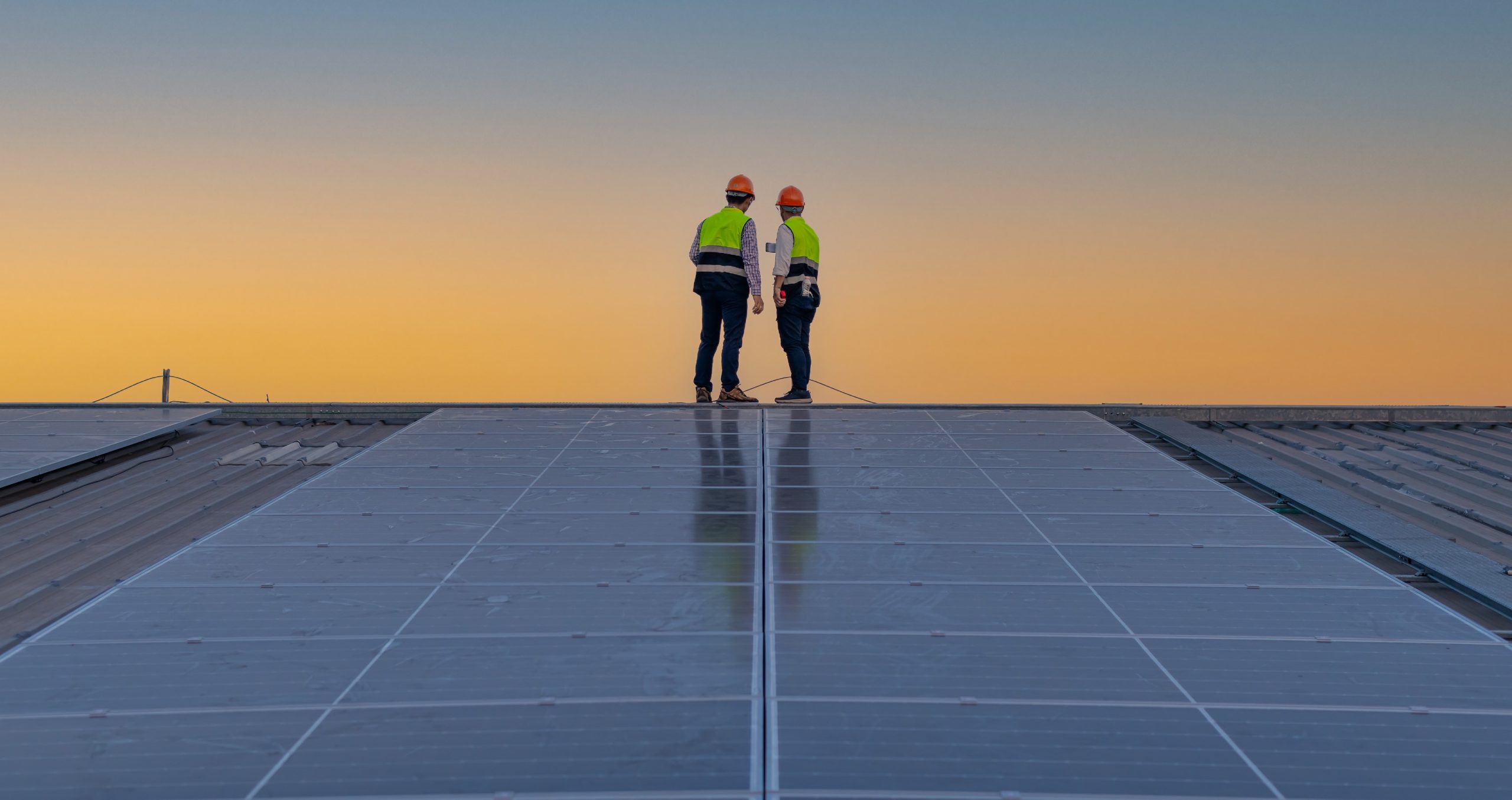And that’s a wrap on AMNA 2024! SolarPlaza’s 10th annual Asset Management North America conference in San Diego was filled to the brim with people, sessions, and discussions key to improving the solar asset management and renewable energy experience.
However, there were definitely 3 main topics people were chatting about both days. Here’s what was on everyone’s minds at AMNA this year:
Workforce/Labor Shortage
It’s no secret the solar industry is growing exponentially, thanks to the passing of the Inflation Reduction Act (IRA) in 2022 and its measures aimed at increasing widespread adoption of US-based renewable energy manufacturing and installations.
Unfortunately, when an industry undergoes bursts of development and progress, growing pains often come along, and in solar, a large pain is the question of adequate workforce.
No matter where you turned at AMNA 2024, everyone seemed to be asking, “Who’s actually going to build and maintain our assets in the future?”
In a session about the solar O&M market outlook, Aaron Marks of Clean Energy Associates said, “No one’s going to have a problem paying prevailing wage. They’re going to have a problem finding people.”

The current labor shortage is only made worse by factors such as pay discrepancies between types (O&M vs. installs), location of solar work, and a lack of standardization for solar technician classification.
Fortunately, experts like Amanda Bybee of Amicus O&M Cooperative are taking direct aim to address many of these concerns. The co-op is dedicated to creating standardized training and certifications of technician levels to help address future solar asset management needs.
After all, as Amanda said, “If you install all the solar in the world, what happens if it crashes after that?”
Another way workforce development can accelerate is by having the entire industry better educate the general public about the labor shortage, as well as the benefits of solar technician careers. The more people are aware of the opportunities that exist for technicians, the more likely we are to see labor concerns decrease as recruitment improves.
To that end, Omnidian is working to create awareness and standardization of solar technician opportunities alongside Amicus, where our Vice President of Commercial Sales, Ben Compton, serves as a board member. Ben and our former Vice President of Commercial Operations, Anna Waters, also contribute to the SEIA O&M Working Group as it develops standards for the solar O&M technician community.
Budgeting for O&M
AMNA 2024 attendees also acknowledged that developers and service providers need to better align on accurate forecasts of production and maintenance costs, so owners aren’t chasing unrealistic performance goals down the road.
“Unrealistic estimates are causing a waterfall of problems in the industry, such as unforecasted O&M expenses and unmet performance promises,” notes Julie Kazanjian, Omnidian’s Product Marketing Manager. “This lack of transparency will have to change, as financial partners are going to start requiring more rigor.”
For example, if developers start modeling for what a system is likely to produce vs. what it theoretically could produce (e.g. a 96% availability vs. a 99% availability), the financial models that owners depend on for an on-target ROI are more likely to come to fruition.
Current underestimates for preventive and corrective maintenance costs within solar asset management plans are the other side of the ROI equation. Accuracy in O&M cost projections is also key to successful projects and O&M partnerships.
Additionally, collaboration across all interested parties at the very beginning of a project is key to improving (and approving) budget concerns. If developers and owners start to think about implementing a high-quality O&M plan from day zero, you have the opportunity to plan appropriate preventive maintenance that mitigates the need for costly corrective maintenance down the road.

Battery Storage
Last, but certainly not least, was the discussion of PV’s companion technology: batteries. Battery storage development – as well as managing storage and dealing with aging storage infrastructure – will be a big focus in the solar industry in the coming years.
In fact, energy data and analytics company Wood Mackenzie anticipates 55% of new installs will include battery energy storage systems (BESS) by 2033. Since batteries operate 24/7 (not just during daytime hours), some asset owners could see a 50% or more increase in monitoring needs.
Steph Spiers of Solstice Power Technologies said during her equitable clean energy presentation that “we can only build transmission at the speed of trust,” and batteries play a huge part in building trust in solar as a reliable source of energy. This is because when assets create more energy than is used, that energy needs to be kept somewhere safe and accessible for use during low-to-nonexistent production hours (e.g. at nighttime when panels aren’t generating).
It’s clear there are many issues that the industry needs to overcome when it comes to battery storage deployment. On the front end, there are challenges with integrating data streams and validating performance. For ongoing O&M, there aren’t standard terms across manufacturers, and it’s often unclear which party is responsible for which aspects of ongoing maintenance.
However, all of us will need to partner across different functions to create viable long-term solutions to make solar asset management and battery storage seamless.
There were other topics brought up at AMNA 2024, like the rise of automation/robots and the implications of the IRA, but overall, these were the main discussions floating around attendees and sessions each day. Let’s see what’s discussed at next year’s event!








